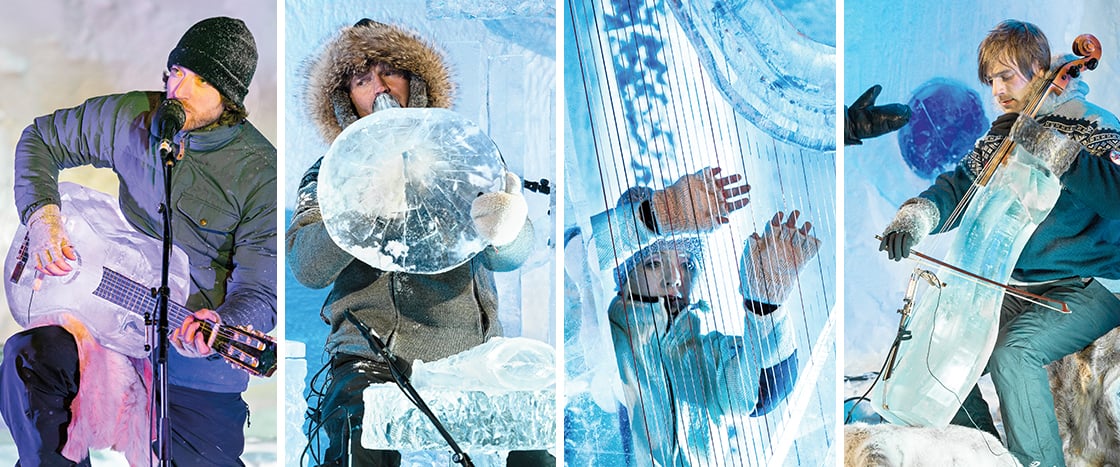Jim McMahon
Every February, hundreds of people make their way to the frigid town of Finse, Norway. There, they brave temperatures far below freezing to attend a series of special outdoor concerts. Every instrument the musicians play—and even the stage they play on—is made almost entirely of ice!
This event is called the Ice Music Festival. Musicians and artists work together to carve everything from horns to guitars. Festival founder Terje Isungset (TAHR-yeh EE-soong-set) built his first ice instrument 20 years ago. “When I heard the sound of ice, I fell in love with it,” he says.
Every February, hundreds of people travel to Finse, Norway. The town is frigid in the winter. But visitors brave temperatures far below freezing. They come to see a series of special outdoor concerts. Every instrument played is made almost entirely of ice. Even the stage the musicians perform on is frozen!
The event is called the Ice Music Festival. Musicians and ice sculptors work together. They carve everything from horns to guitars. Terje Isungset (TAHR-yeh EE-soong-set) founded the festival. He built his first ice instrument 20 years ago. “When I heard the sound of ice, I fell in love with it,” he says.

